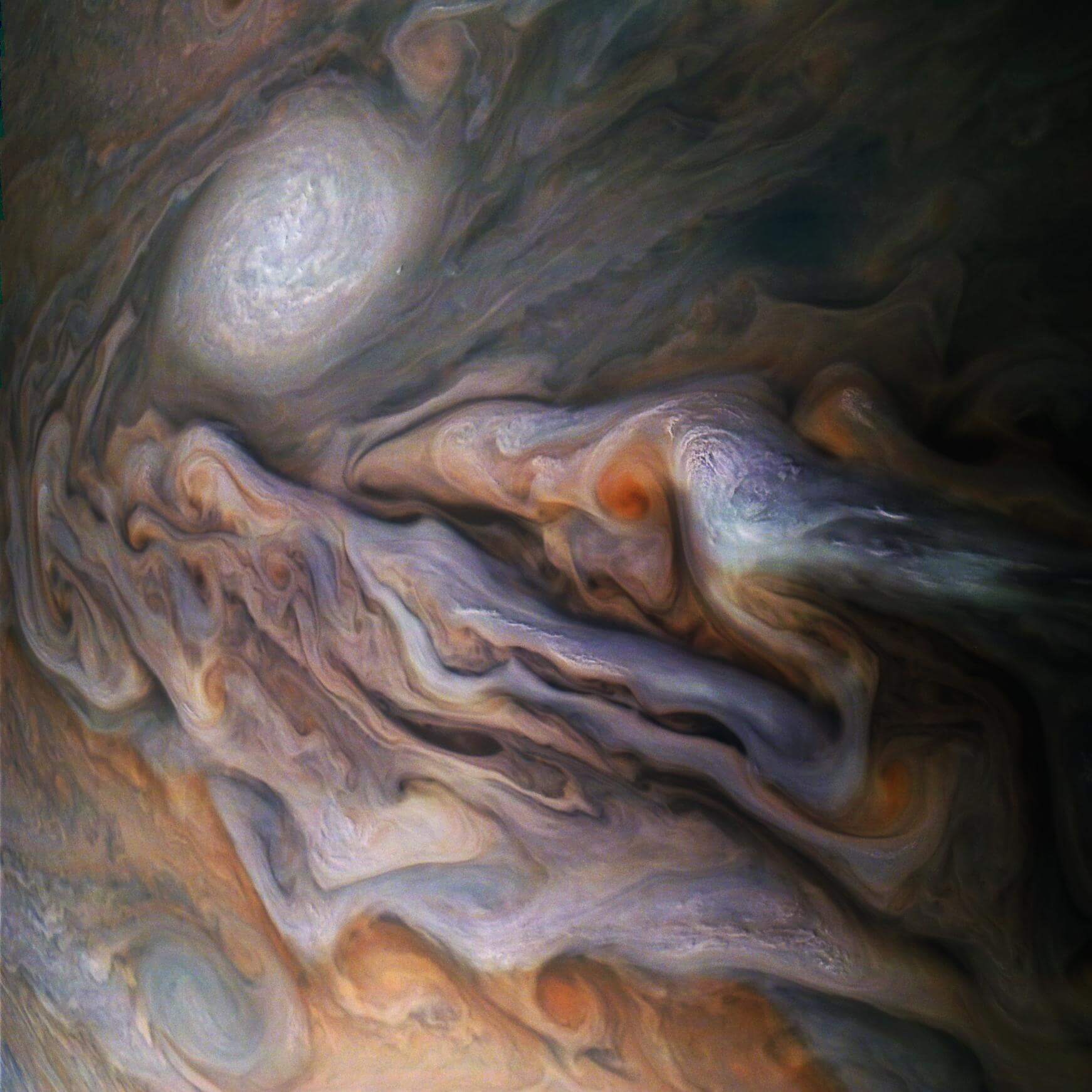An international team of astronomers found that the gaseous mantle of Jupiter does not have a homogeneous distribution. The inner part has more metals than the outer parts, and they amount to 11 to 30 Earth masses and make up 3-9% of the total mass of Jupiter. It is likely that these are planets and moons that Jupiter "swallowed" during its formation

An international team of astronomers found that the gaseous mantle of Jupiter does not have a homogeneous distribution. The inner part has more metals than the outer parts, and they amount to 11 to 30 Earth masses and make up 3-9% of the total mass of Jupiter. This is a high enough metallicity to conclude that kilometer-sized bodies - tiny celestial bodies - must have played a role in the formation of Jupiter. The research was led by Yamila Miguel (SRON/Leiden Observatory) and was published on June 8, 2022 in the journal Astronomy & Astrophysics.
Jupiter, a gas giant, is the fifth planet from the Sun, orbiting it between Mars and Saturn. It is the largest and most massive planet by far in our solar system, with a mass of more than 317 times the mass of Earth.
When NASA's Juno spacecraft reached Jupiter in 2016, we got a glimpse of the awe-inspiring beauty of our solar system's largest planet. Except for the famous big red spot, it turns out that there are rightly hurricanes, which give it a look and mystery almost like a Van Gogh painting. The star's mantle below the thin visible layer, however, is not immediately visible. And yet Juno can paint us a picture by sensing the pull of gravity over different places on Jupiter. This gives astronomers information about the composition of the interior, which is unlike what we see on the surface.
An international team of astronomers led by Yamila Miguel has now found that the gaseous envelope is not a homogeneous mixture as previously thought. It has a higher concentration of "metals" - elements heavier than hydrogen and helium - towards the center of the planet. To reach their conclusions the team built several theoretical models that meet the observational limits measured by Juno.
Miguel: "There are two mechanisms by which a gas giant like Jupiter obtains metals during its formation: through the accretion of small fragments or larger tiny celestial bodies. We know that when a baby star is big enough, it starts pushing out small fragments. The wealth of metals within Jupiter that we see now was impossible to get before that. So the scenario with only small fragments as solids during the formation of Jupiter can be dismissed. Tiny celestial bodies are too big to be blocked, so they inevitably played a role."
The finding that the inner part of the mantle has more heavy elements than the outer part means that the abundance gradually decreases outward, instead of being a homogeneous mixture throughout the mantle. "Before, we thought that in Jupiter there is heat convection, like in boiling water, which causes it to be completely mixed," says Miguel. "But our findings show otherwise."

4 תגובות
It's a shame that they upload an article on Google Translate
With full confidence we are familiar with theories about the emptiness of the core of Jupiter and Saturn. The scientists are worthless. I can come up with a theory too
Too bad, - Yitzhak Tshuva could have been sent there
Bring lots of gas. - He likes things like that.
Someone in the system suffers/enjoys OCD/CDO - Jupiter's mass is 317 and not 137.